What is this stuff? A look into your local Japanese supermarkets
Japanese market stuffs?!
It’s no secret that the Japanese live long lives. Their life expectancy is one of the tops in the world. It could be that most Japanese are incredibly active, some even traveling internationally well into their 80’s. Or it could just be that the Japanese diet is one of the healthiest in the world. Even school lunches, for instance- often prepared from locally grown, all-natural ingredients and changes daily. Healthy eating starts at a young age.

A typical Japanese meal consists of many small dishes. There is no concept of a one-pot casserole dish here. That’s why most houses don’t come with an oven. Instead, they have a main, such as fish or pork, along with miso soup, rice, tsukemono (something pickled), and a side of vegetables such as sautéed spinach or sweetened seaweed. The idea of eating many small dishes (kobachi) fills your body with various nutrients and lets you enjoy many different tastes.
Ok, but what’s all this ‘foreign’ stuff I see in the grocery store?
As you walk through your local store, are you shocked by the amount of stuff you’ve never seen before?
“What is this stuff?!?!?!” must be repeating over and over in your mind!
In this article, we want to help identify those strange items you see in the grocery store. Hopefully, they might end up on your plate for dinner sometime soon because don’t we all strive to live long, healthy lives?
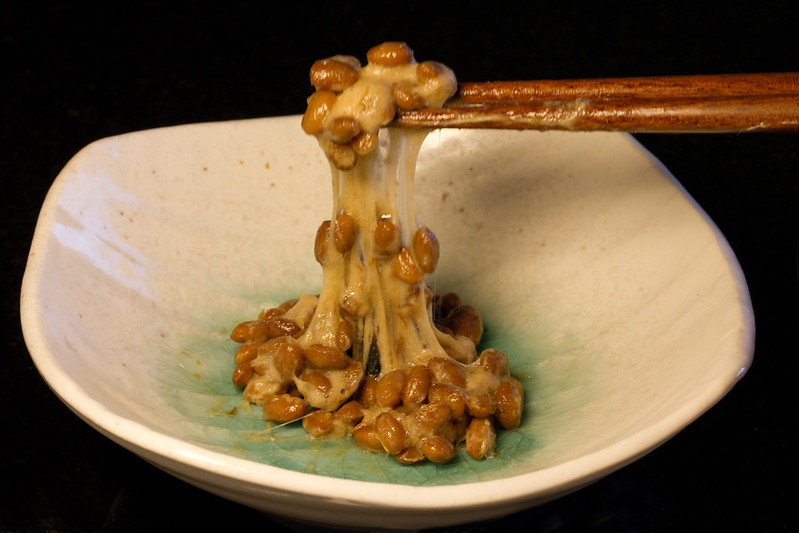
(natto! smells like used socks- tastes like ambrosia)
So let’s take a virtual walk through your grocery store!!
First up is probably one of the most unique item in Japan:
Natto – Fermented Soy Beans
You will find all types of these stringy fermented beans, from chopped beans to whole beans to flavored with Shiso or Seaweed.
It packs with it a powerful stink (!), and if you can get past the smell, it can be one of the healthiest and most delicious foods you add to your new Japanese diet. It’s commonly eaten for breakfast mixed with some soy sauce and mustard, then topped on a hot bowl of rice. Some expats have found it easier to ‘break into’ the natto life by combining it with some vegetables.
A good first start is to cut up some avocado and tomatoes and mix it together with a squirt of soy sauce. These incredibly healthy, vitamin and probiotic packed beans, are the cheapest hidden superfood found on the market today!
Just check out all the health benefits listed on this article:
★ https://www.healthline.com/nutrition/natto
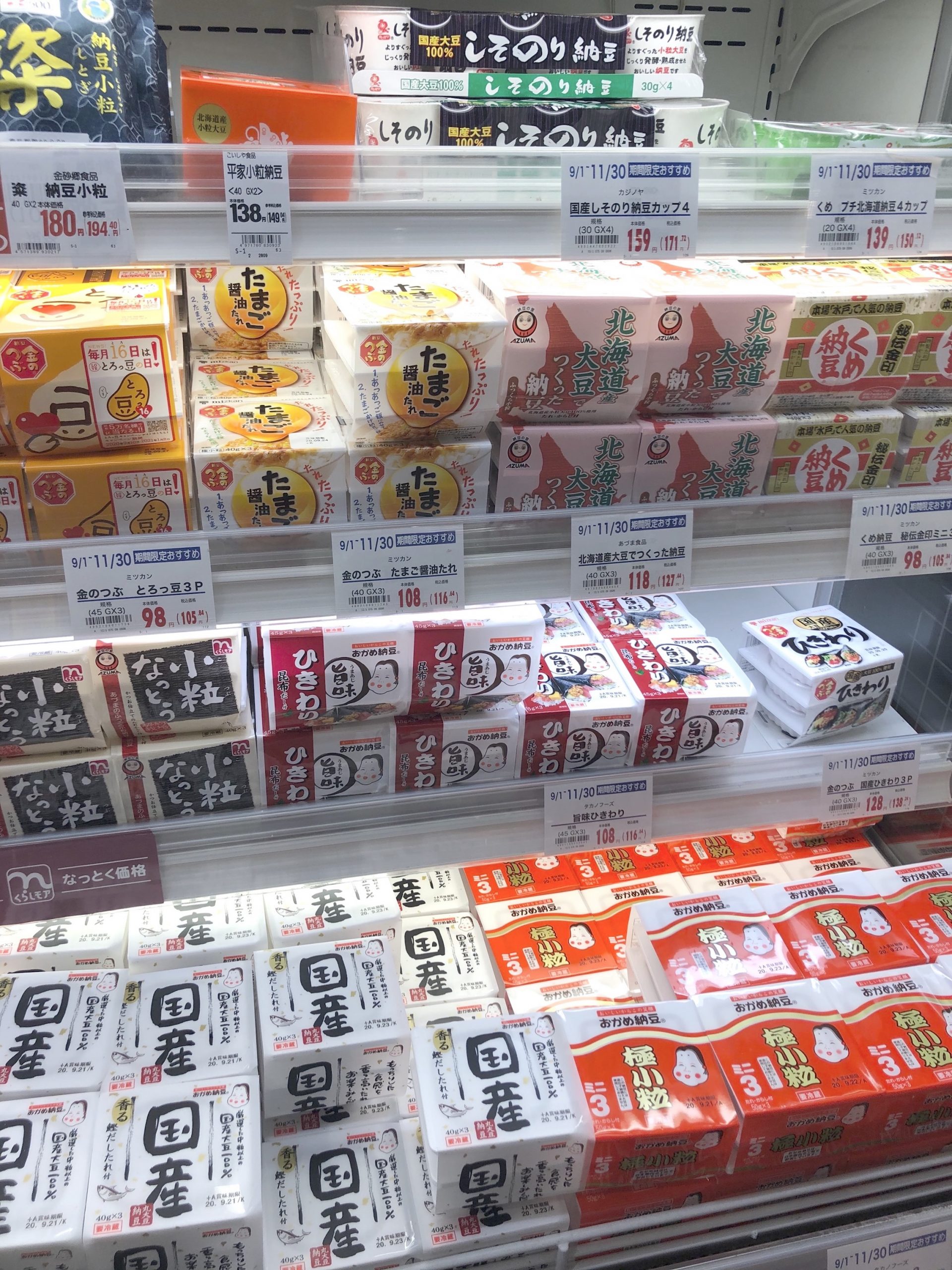
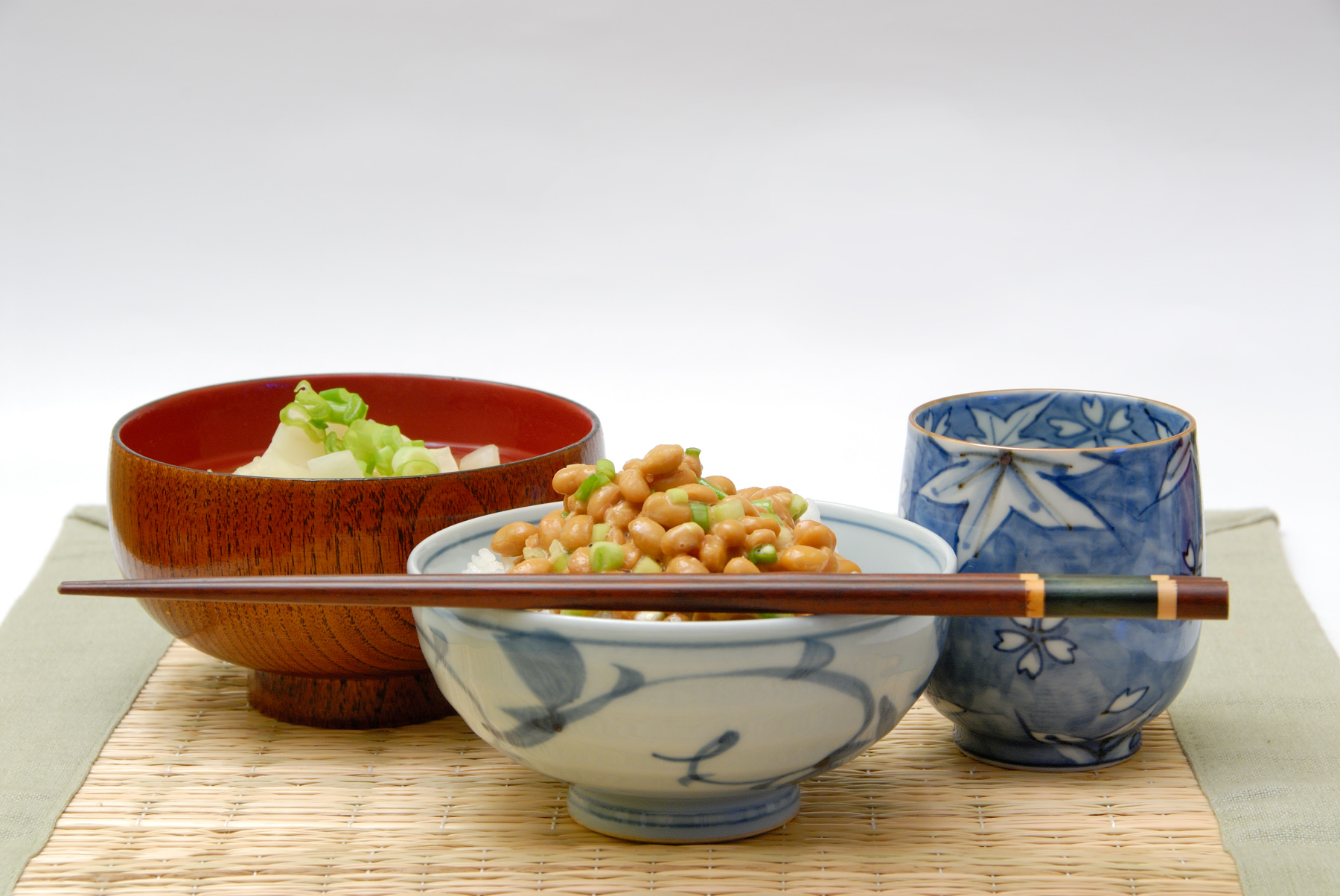
(it’s an acquired taste, but once acquired, there’s no going back!)
Miso
Miso is another fermented soy product that is most popularly known for Miso Soup. There are so many miso varieties- from dark to light- depending on the length of fermentation. Miso is another gut-happy-health-product (like natto), packed with many minerals and vitamins. Miso can be turned into a sauce for meat, a delicious marinade, or even a dip. Or it can be as simple as mixing miso and mayonnaise, you now have a dip for your veggie sticks and cabbage leaves.
Which miso should you buy?
The deeper in color, the deeper the taste will be. Pictured below is the most common miso found in most Japanese households.
Check out all the health benefits here:
★ https://www.healthline.com/nutrition/why-miso-is-healthy
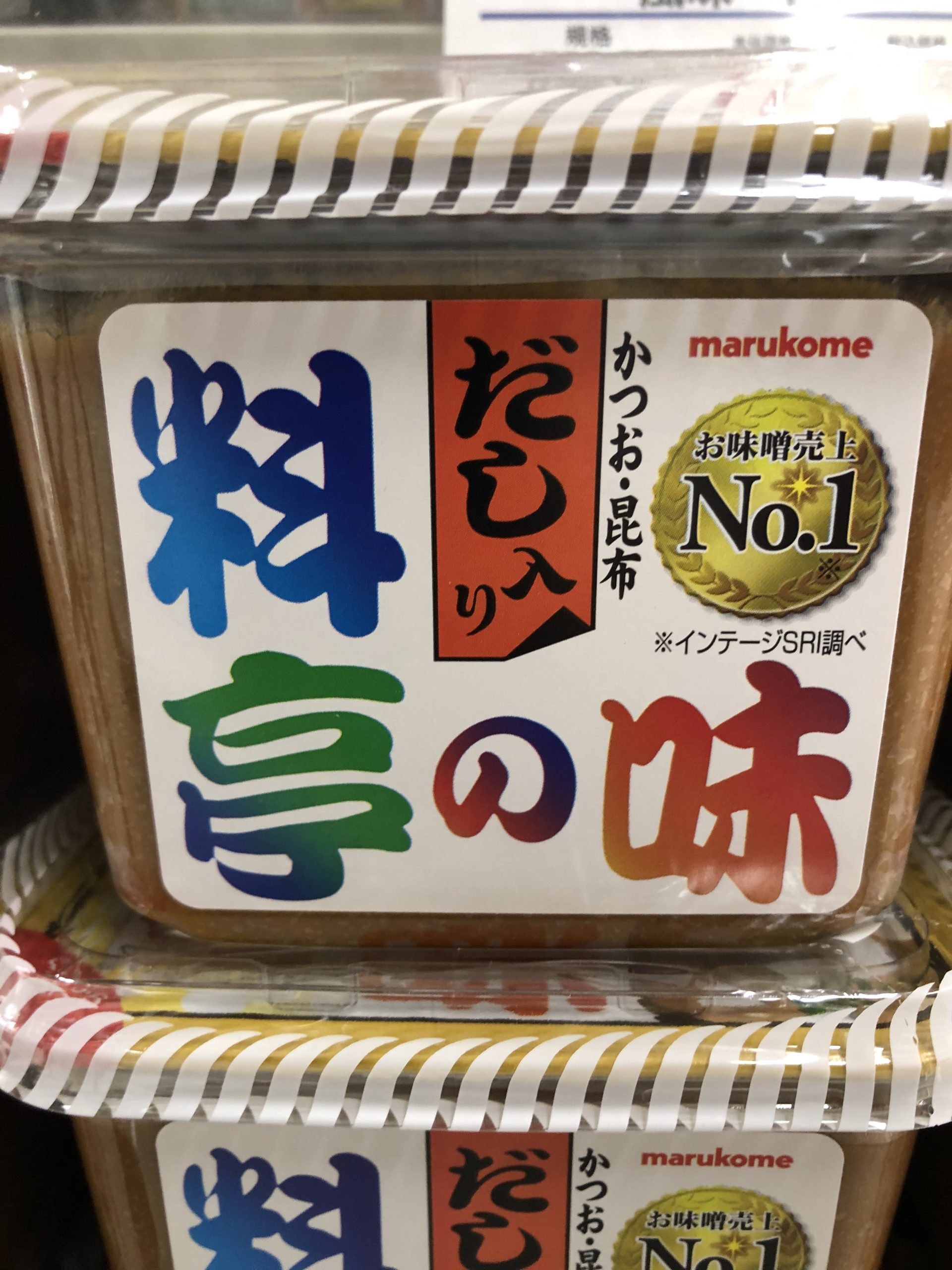

Konnyaku
Typically found near the Natto and Tofu sections is a jelly-like textured brown (or white) pack of konnyaku. It is made from a konjac potato and consists mainly of water. Some come in noodle shape form and typically found in dishes like oden and nabe soup. It’s a good alternative for a low carb, low calorie, and gluten-free noodle, although chewier in texture. Even dice it and put it in your miso soup for some added texture.
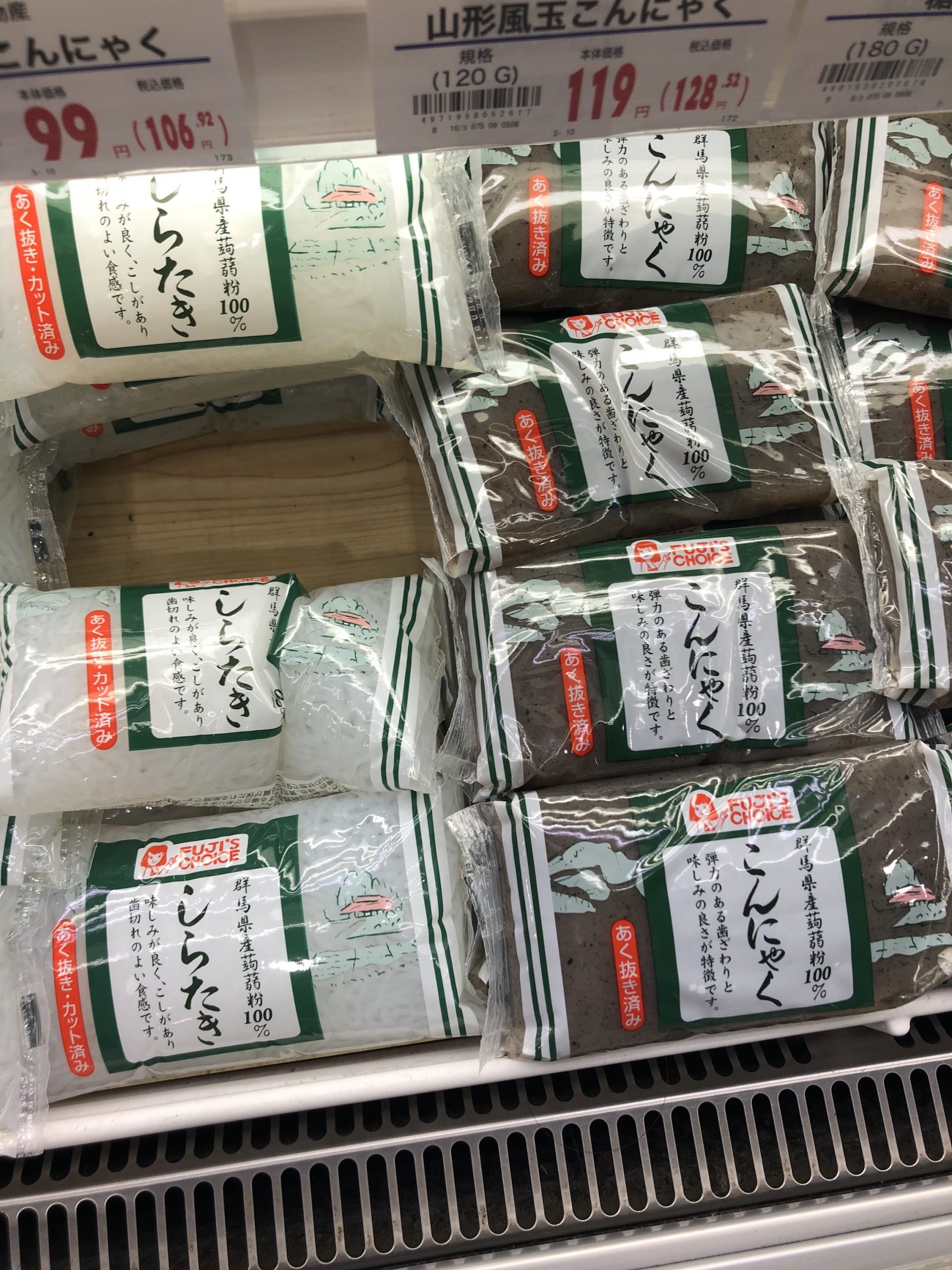

(oden with a piece of white konnyaku – oden is awesome in the winter!)
Tofu
Although tofu is not uncommon these days, the variety of tofu in Japan is worth noting.
Japan has:
Silky tofu (kinu tofu 絹)
Firm tofu (momen tofu木綿)
Fried tofu (atsuage tofu 厚揚げ)
Tofu skin (abura-age 油揚げ)
Depending on your preference of texture, you can have an endless amount to choose from. Silky tofu tends to be used in miso soups, where the hard tofu is more for stir fry dishes such as Mapo tofu (Chinese dish, but very popular in Japan).
Make a side dish of tofu with some soy sauce, and topped with grated ginger, mmm mmm yumm.

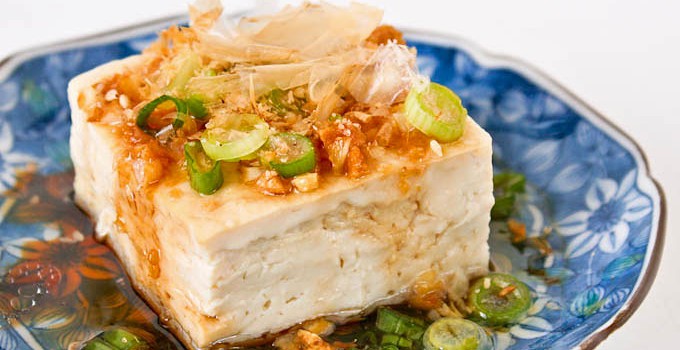
(tofu with green onions, ginger, sesame seeds, soy sauce, and katsuobushi – simple and yuuumm)
Pickled Everything!
If you haven’t noticed the pattern yet, most foods common to Japan have to do with fermenting or pickling. Pickled ginger, pickled root vegetables, cucumbers, radishes, onions- you name it- it can be pickled!
Pickles are a standard side dish to any meal in Japan. Also, kimchi, which is a spicy Korean pickled side dish, is very popular in Japan.
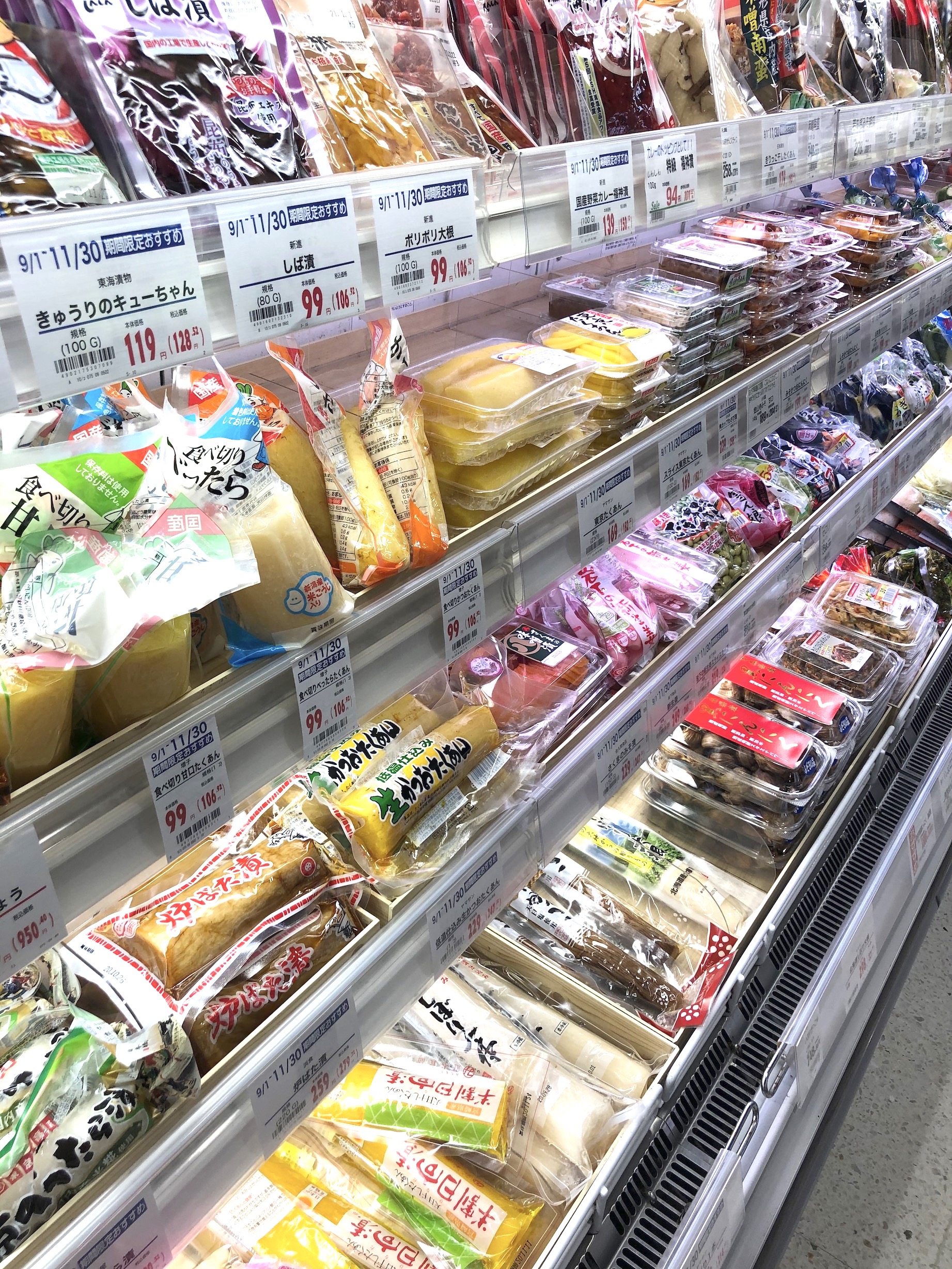
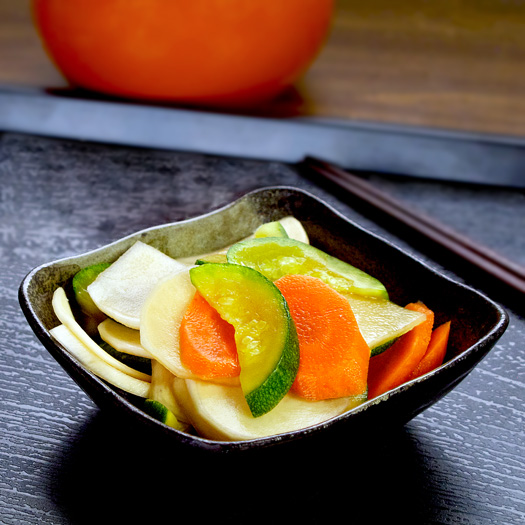
Daikon Radish
This long root radish is a vegetable commonly grown in Japan. The tip tends to be bitter- almost spicy- and perfect for pickling or in dishes stewed in sauces for long periods of time.
The middle (core) is supposed to be the best part- sweeter and nuttier– perfect for miso soup or other stir-fries. The daikon can be also be found pre-cut into sections to cook with only the part you enjoy to eat.
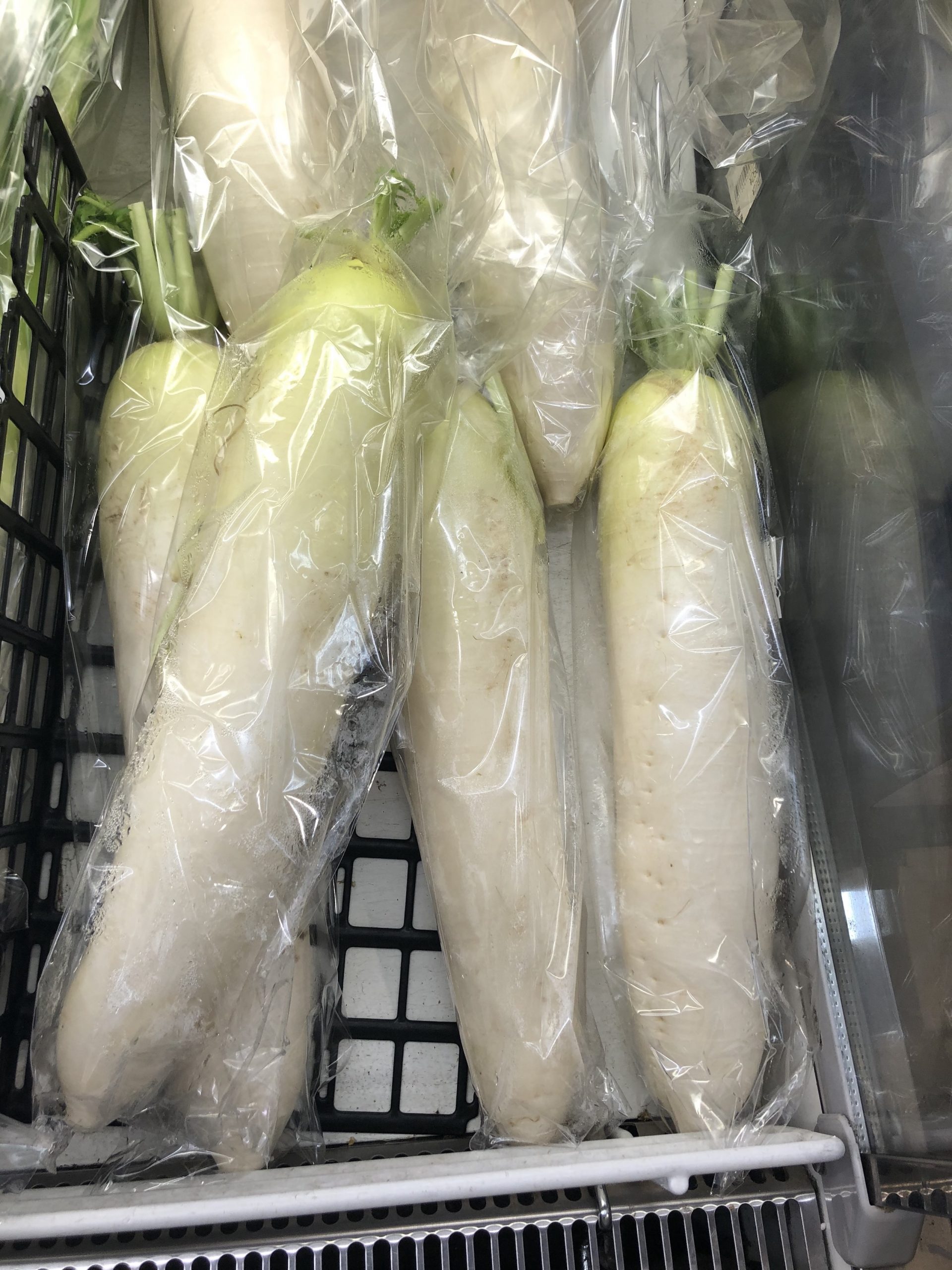
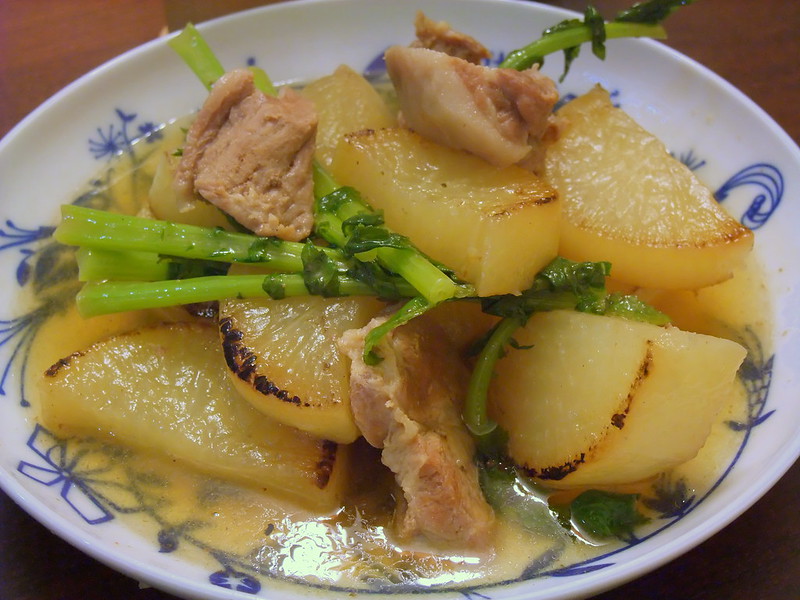
(daikon nimono)
Renkon or Lotus Root
Renkon is a vegetable found in many Asian dishes and is the root of the Lotus flower. It has a crunchy texture with a nutty flavor. A favorite way of eating Lotus root in Japan is by making a sandwich like dish. The sliced Lotus roots sandwich in the minced meat and then deep-fried until crunchy and delicious and topped with a sweet sauce or dipped into soy sauce.

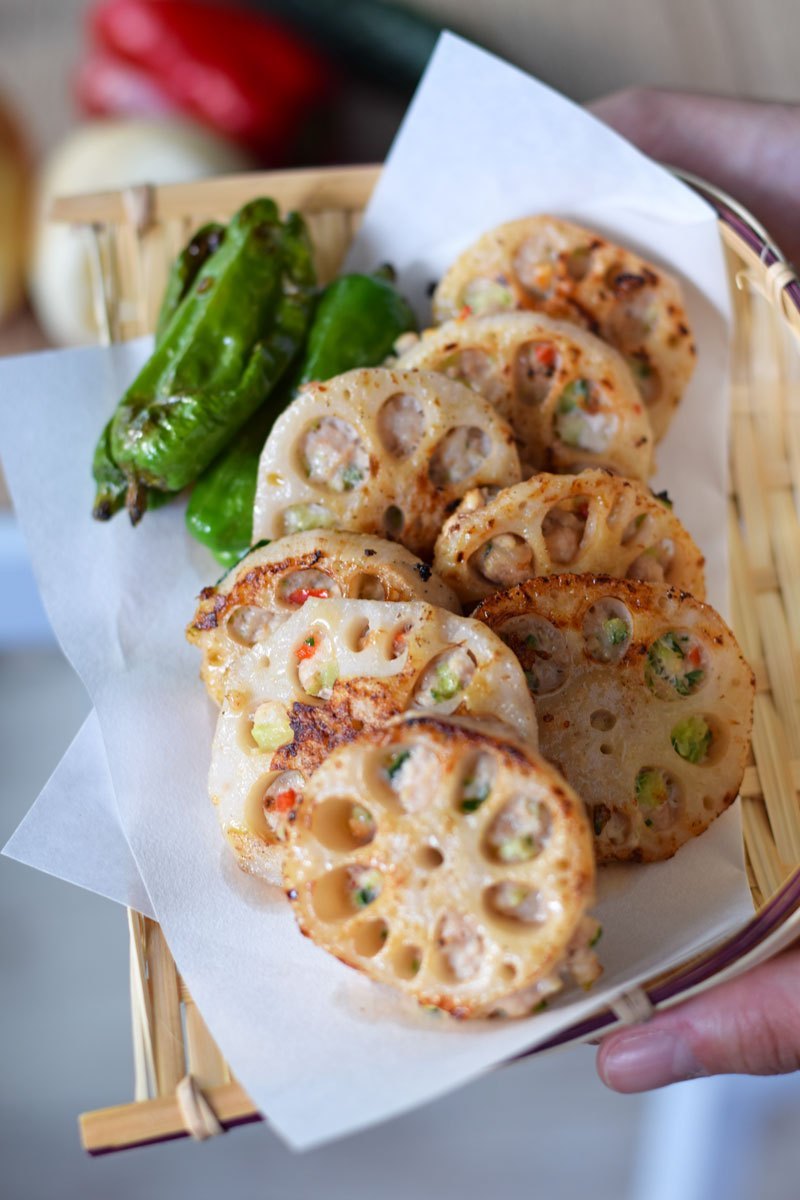
Umeboshi – Soured Japanese Plum
When you order an obento box, you will often find a pink pickled plum sitting on top of the rice. Umeboshi might look funny, but most people love it for its sour taste. Although the name is called plum, it resembles more of an apricot look and taste. These Japanese plums are also what make some of the popular summer alcohol drinks such as Umeshu. Umeboshi is sour and salty- goes well with rice for a little added kick!
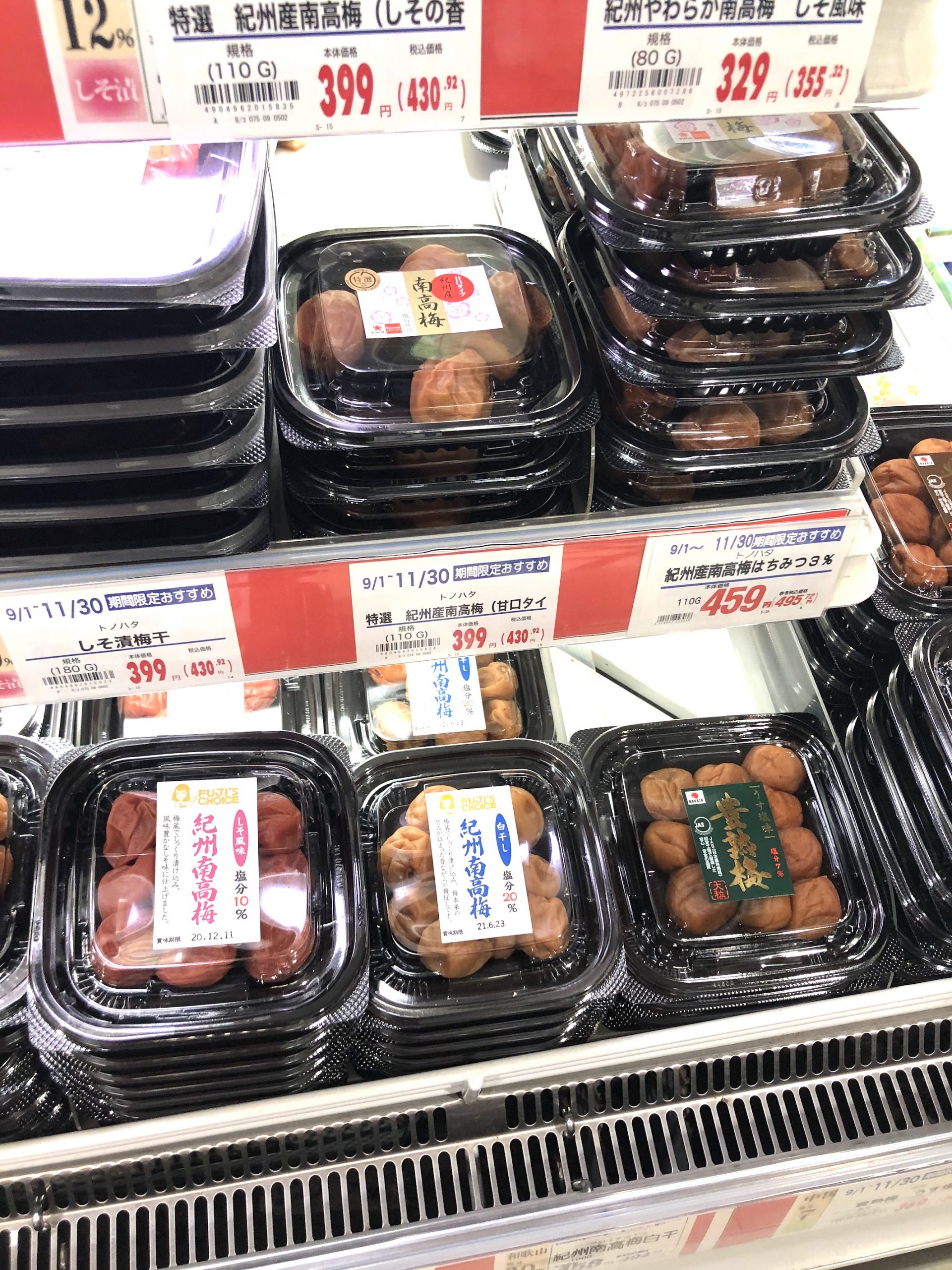
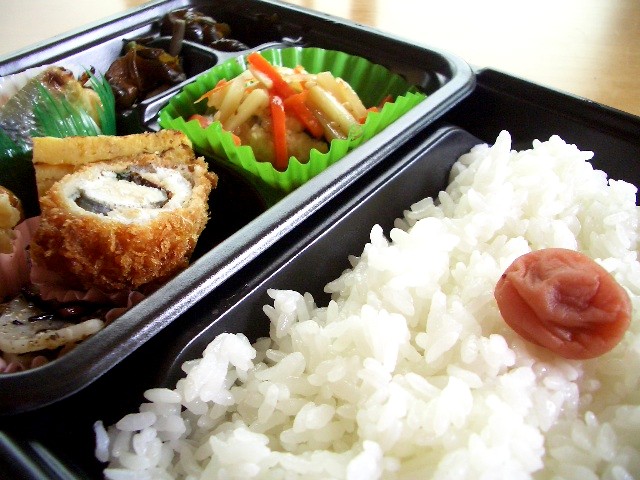
(a sour plum sitting on top of rice)
Dashi – Fish Stock
Although you might overlook dashi at the grocery store, it is also a staple product in Japan. Fish is often the base of dashi (not to be confused with Thai fish sauce). Dashi is the base for most flavoring and umami taste in Japan and the stock for Miso soup. It is made from bonito fish flakes.
Chicken stock and Beef stock take a back seat in Japan, and dashi is the real star!
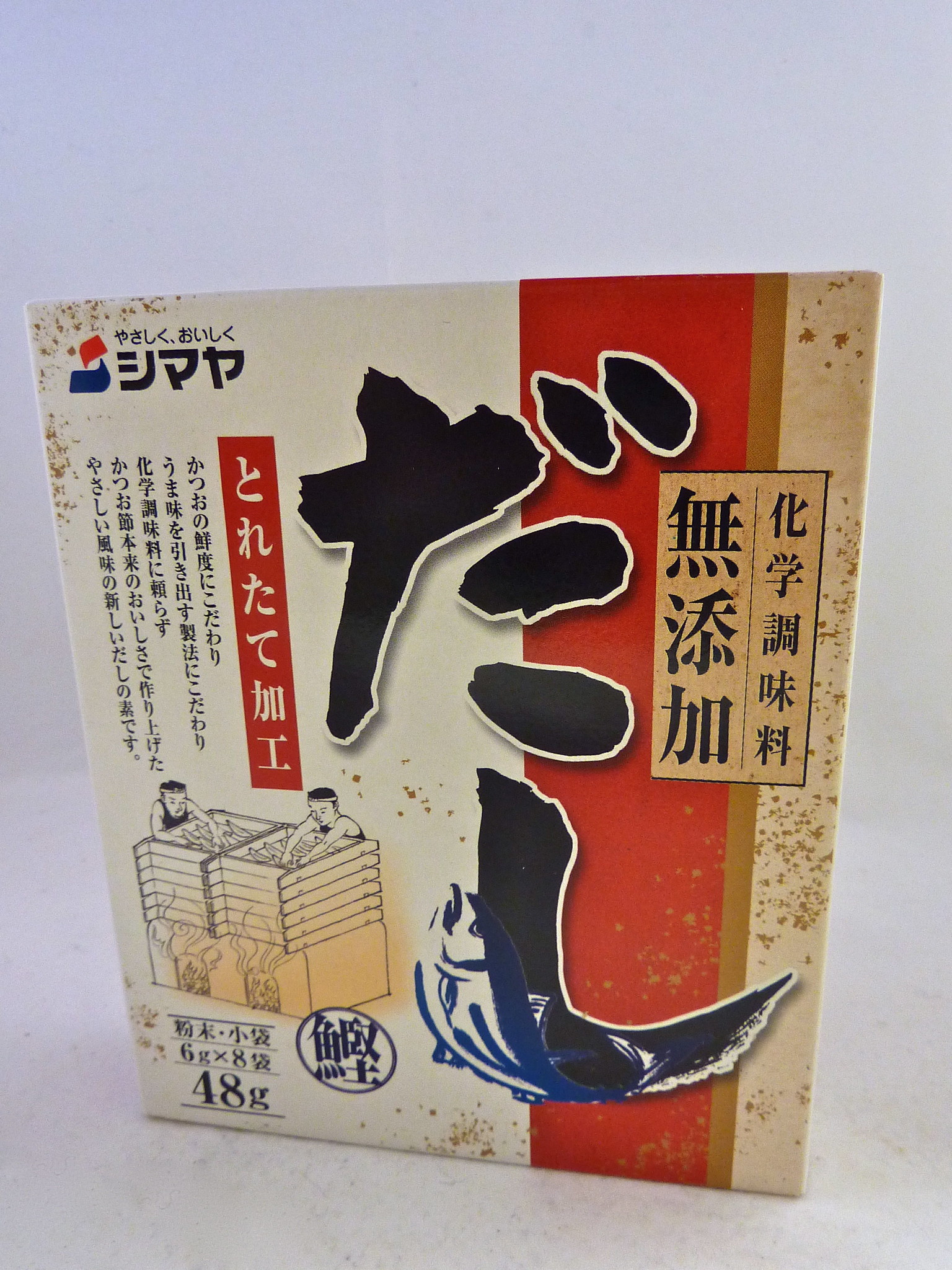
(box of dashi)
Japan food essentials!
Here are some every-kitchen food-essentials that you should have in your home
There are some foods in the stores that are absolutely delicious and make mealtime quick and easy. You should stock your fridge or pantry with these items, and they will be sure to become a weekday staple and help on those busy nights!
Gyoza – fried dumplings
These delicious gyoza packs can be found in the frozen food section and are easy to fry up to add to any dish you are making. Incredibly easy to make, put them in a frying pan, add a lid, and steam/cook for a few minutes, voila! Make a dipping sauce of soy sauce and vinegar with spicy oil if desired. The Ajinomoto brand is the most famous and most delicious.
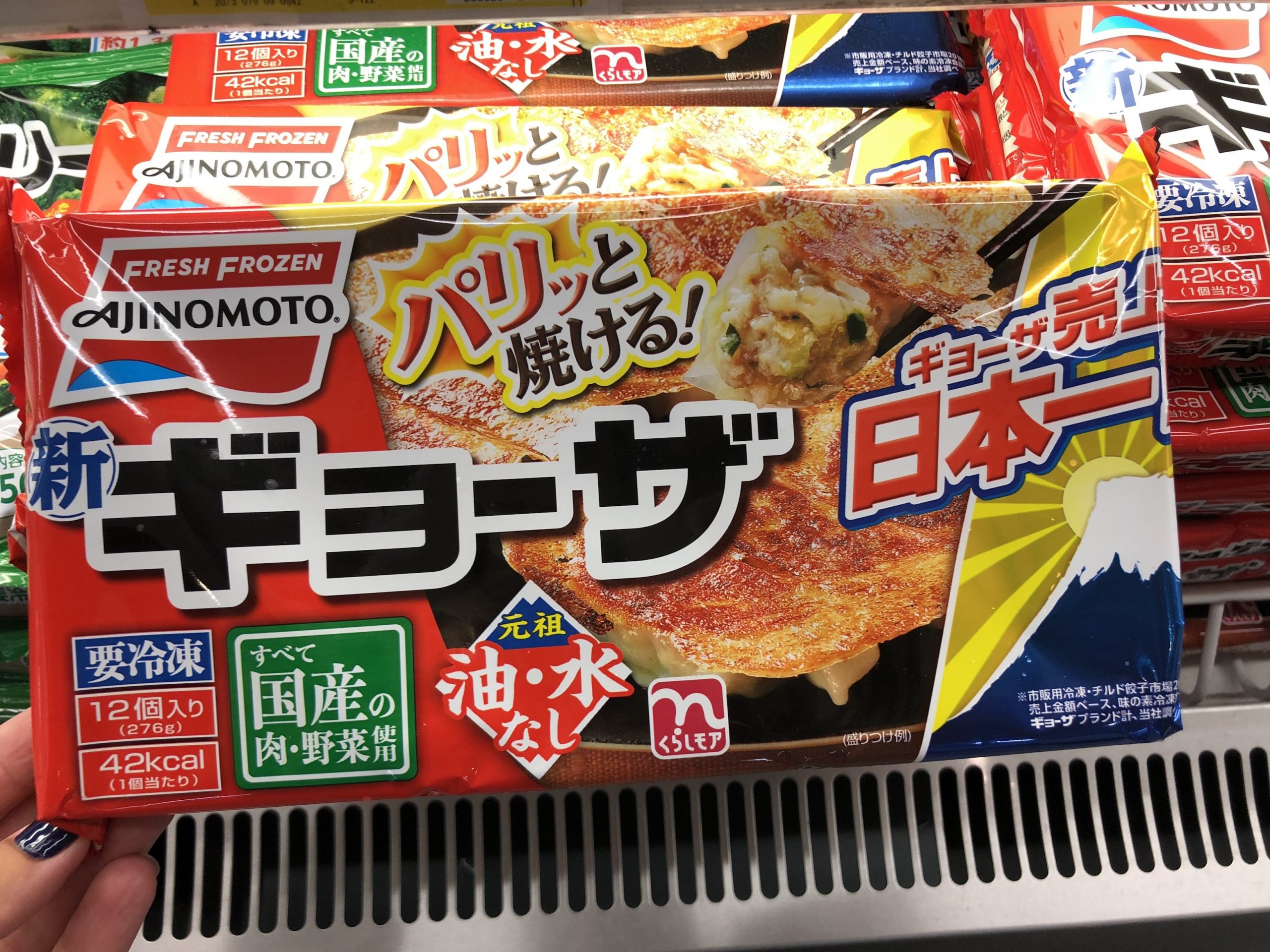
Yakisoba – Stir-Fried Noodles
You will often find a packet of yakisoba in any Japanese household fridge. It’s the easy go-to meal! There are a few types, salt or soy sauce flavored, and sometimes the sauce can be found in either powder or liquid form. The most popular brand is pictured below, with soy sauce base in powdered form. Grab a bag of pre-cut veggies, usually under ¥100, with cabbage, carrot sticks, and bean sprouts, and you have an easy, cheap and satisfying meal!

Goma Dressing – Sesame Salad Dressing
It is a shame that this dressing is not available worldwide. It is one of the best products Japan has produced. Sweet, salty, nutty, and creamy sesame dressing is the perfect accessory to your salad. Grab a bottle- promise you won’t be disappointed!
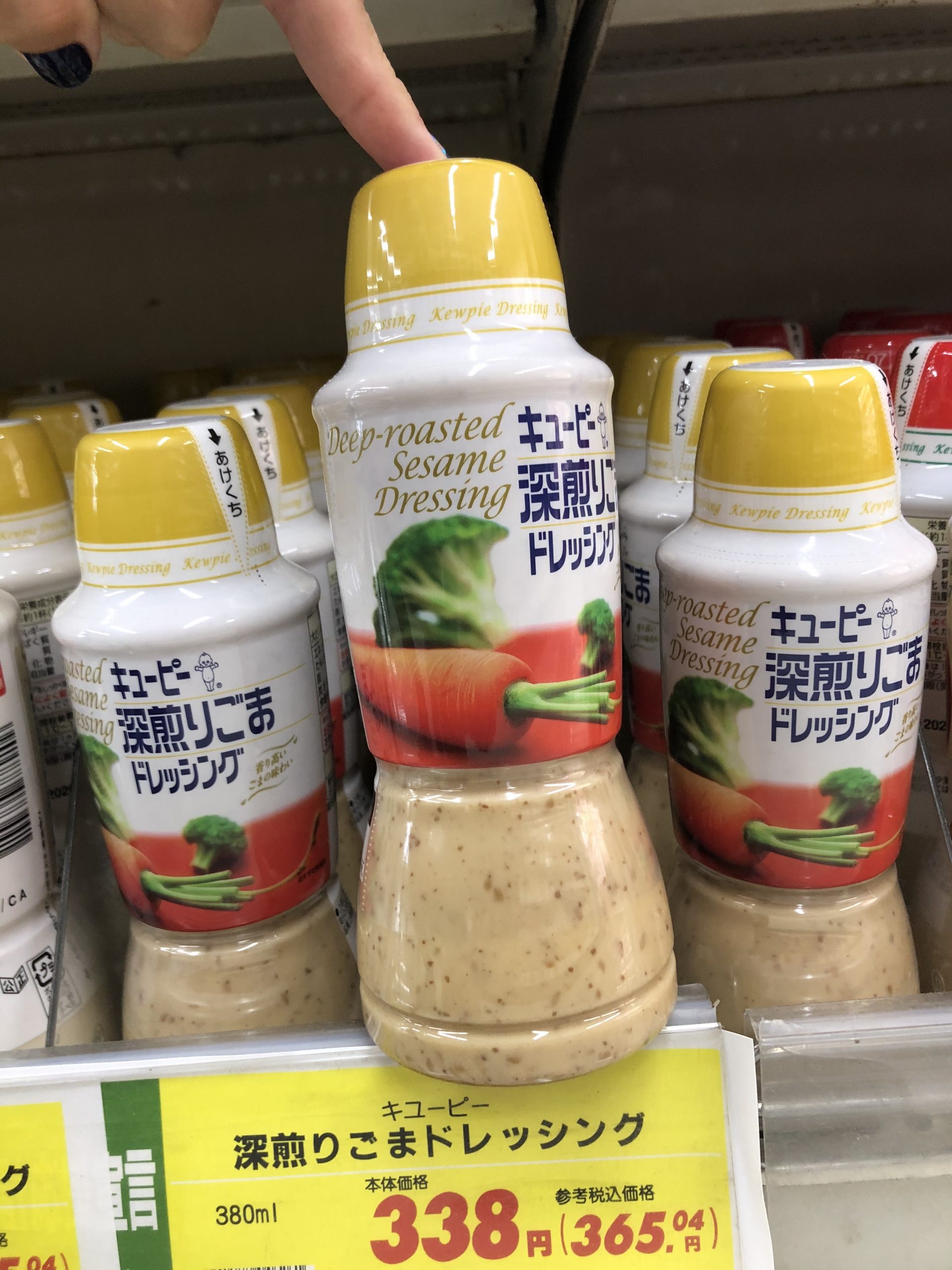
Furikake – Rice Flavoring
Although we all know how absolutely delicious Japanese rice is- great even on its own- it is sometimes nice to mix it up! Besides umeboshi above- there is furikake!
Want to make a quick rice ball but don’t have any leftover fish from the night before? Just add furikake!
Need a little extra pizzazz for your meal? Just add furikake!
There are so many flavors to choose from, seaweed and sesame, bonito flakes with dried vegetables, and so on. You can get some added nutrients to your rice while stepping up its flavor game!

Shoyu – Soy Sauce
You might be used to the one brand of Kikkoman soy sauce back home, but in Japan, you might feel overwhelmed by all the choices.
Like a good wine, it is best to have airflow through it to enrich the flavor and cut back on that salty and bitter punch. These soy sauces (pictured below) come bagged inside the bottle, so when you squeeze out the soy sauce, the air is getting pushed through at the same time. Although they cost a little bit more, the flavor is on point. Use soy sauce to flavor just about anything. The way the Japanese cook their eggs in the morning is without salt, and right before they eat them, they drizzle a bit of soy sauce on top.
The shoyu below should be refrigerated, by the way. In fact, shoyu is supposed to be refrigerated, or is starts to get a super strong flavor and eventually go off– although a loooot of people don’t refrigerate their soy sauce, especially when buying several liters at a time, which is why buying massive amounts of shoyu is getting less and less popular.
Pro tip: Refrigerate your soy sauce!
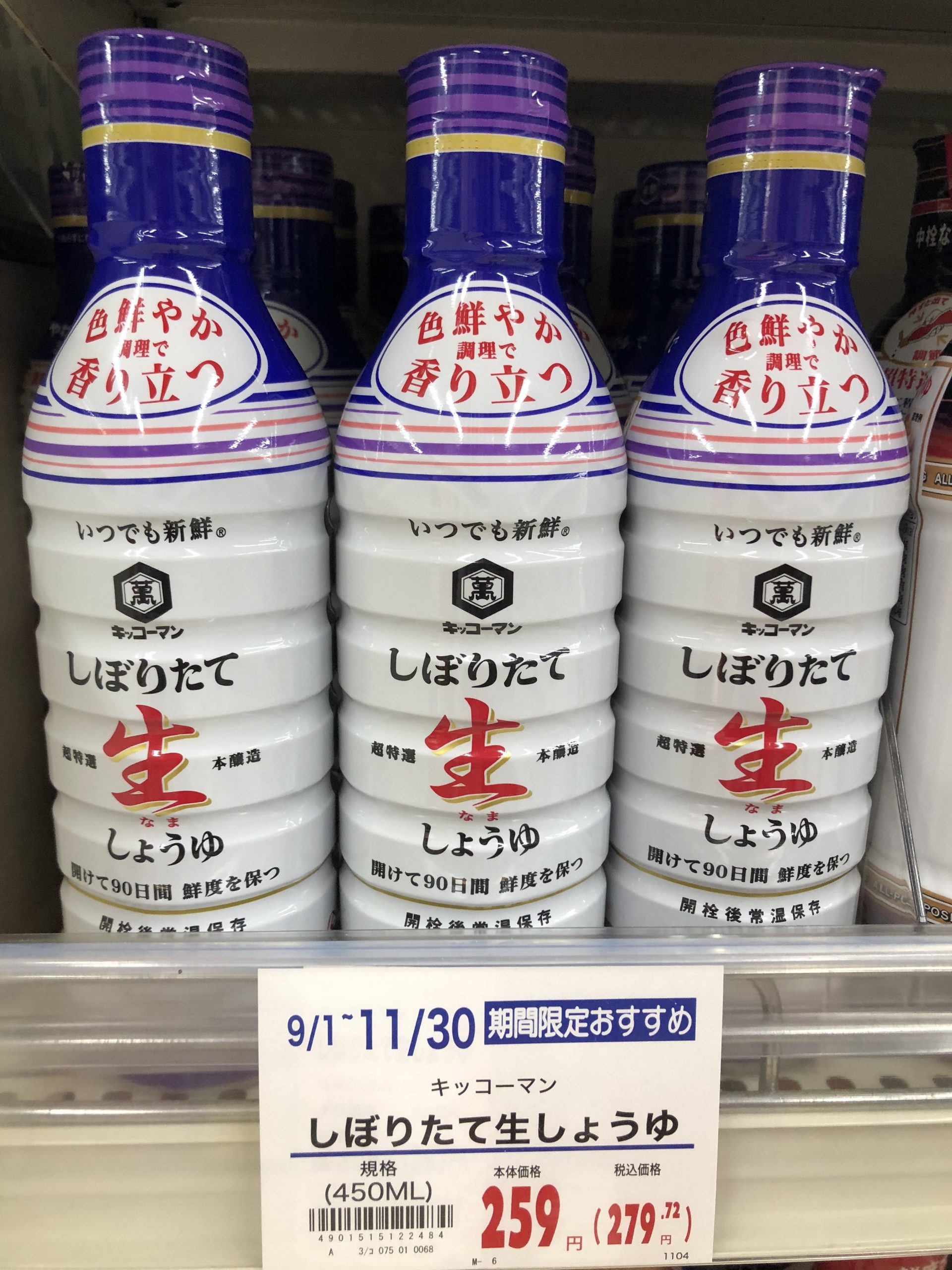
Have a nice food adventure!
Time to step out and try some new foods and flavors in Japan, explore your supermarkets, and maybe those ‘what in the world are those things’ might be some of your new favorite ingredients!
Also, learning to cook with what is locally grown can be noticeably cheaper on your budget. For instance, you can often find Daikon for ¥100 and Tofu for ¥80.
The Japanese diet is a very healthy one, and there is something we can all take away from it. Although you might never get around to eating Natto, studies have shown that a bowl of Miso soup daily, can cut back on significant health risks and help improve your gut. So before giving up on these items, give them a try!
We would love to hear how it goes and maybe what your new-found favorites are!
Bonus tip: check out a Japanese site called cookpad. It has many delicious Japanese recipes that will surely inspire you to try cooking some of these newly found items.
